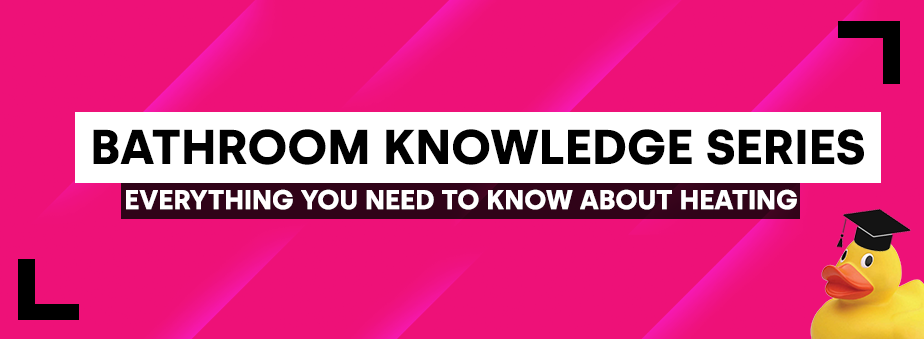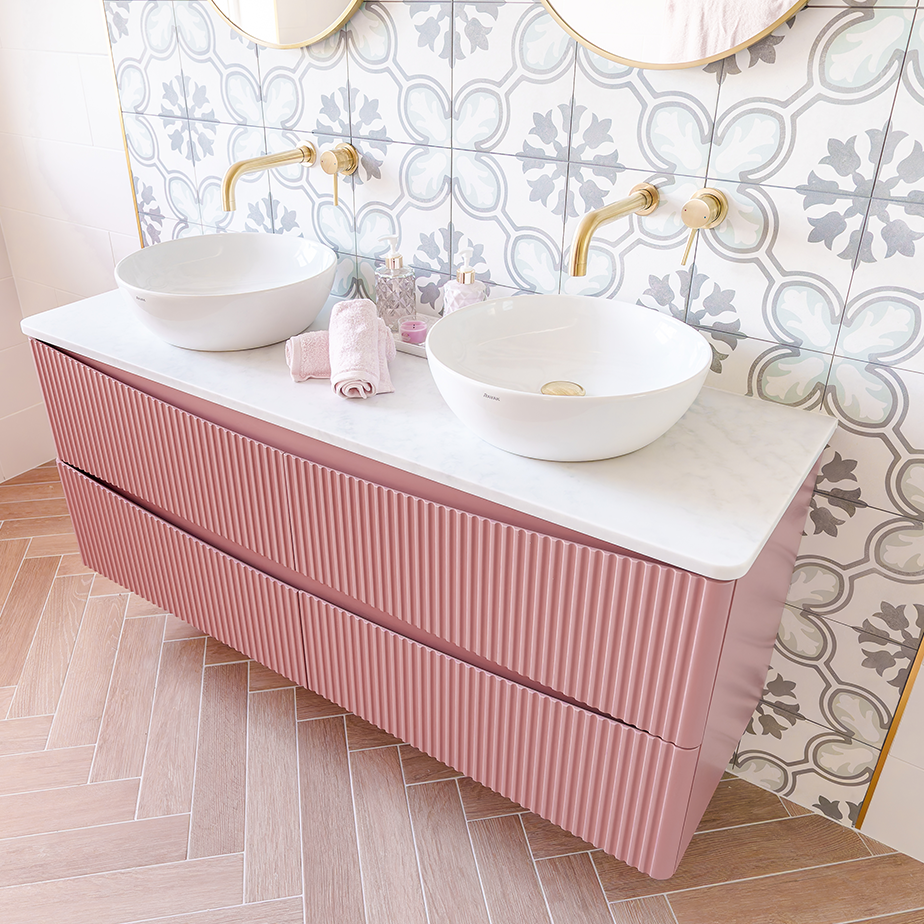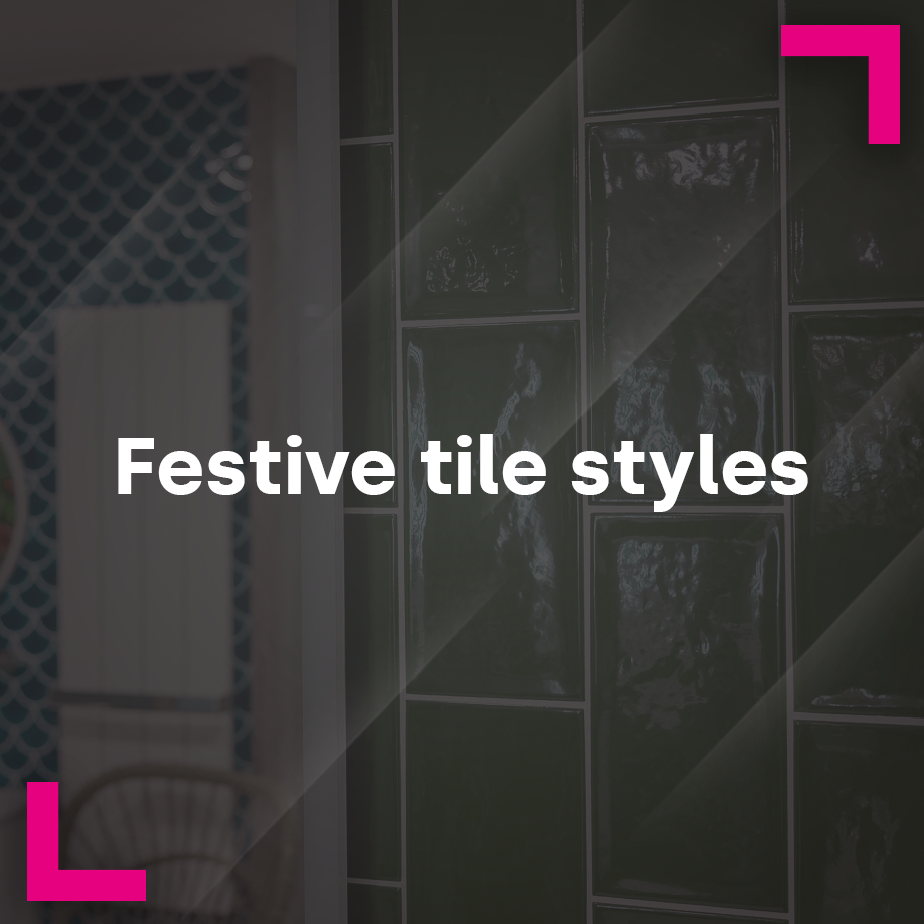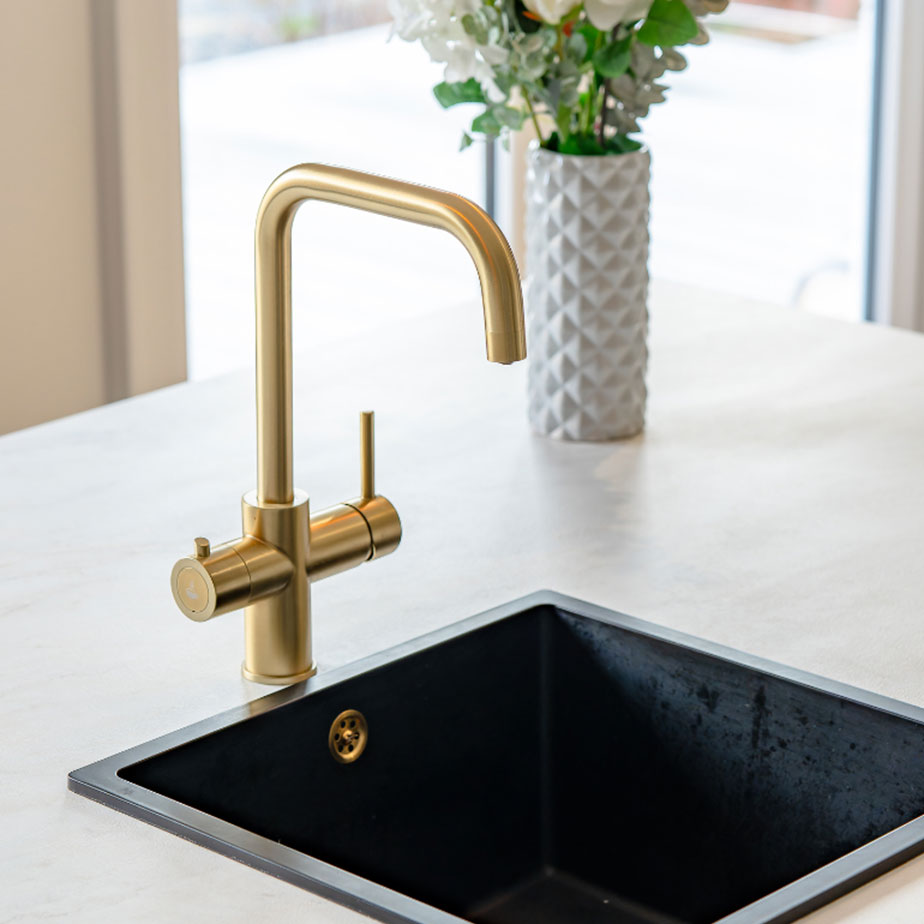All You Need to Know About Heating

Choosing the right heating can make an important impact on your bathroom in terms of functionality and style. We offer a wide range of heating choices at Bathshack, from underfloor heating and heated towel rails to modern radiators. All are designed to not just warm the room but to also look great while doing it.
To help you make the right choice for your home, this guide will help you understand our different heating solutions and what each type can offer.
First, Let’s Talk About BTU
BTU stands for British Thermal Unit. All radiators are assigned a BTU rating. This rating is a quick and easy way of indicating how much heat a radiator will generate. It helps you decide if a radiator is the correct size for your room.
Calculating the right BTU rating
To calculate what BTU rating you need for a room, you must consider the room dimensions, room type, windows, and orientation. Our BTU Calculator will help you with this.
If you're struggling to find the exact BTU rating you need, choose a radiator with a slightly higher output to make sure the room is warm enough.
Radiators & Towel Rails
Regular or standard radiators heat the whole bathroom, while heated towel rails keep towels warm (although some also have the power to heat the room).
Regular radiators are generally operated via central heating and offer a higher heat output. We have radiators in both modern and traditional styles, including designer models.
Heated towel rails use central heating, electricity, or a combination of both.
Up or across?
Many modern radiators can now be mounted vertically as well as horizontally. It allows you to make the most of the available space while providing excellent heating for your bathroom. Vertical mounting is especially ideal if you have limited space, or you prefer the slightly non-conventional.
Smaller spaces
If you have very little space in your bathroom and you're trying to cram in a radiator, you can opt for a heated towel rail. Many of our towel rails have the same BTU output as a standard radiator and should be enough to heat a small bathroom.
Fitting your radiator or towel rail
- If you have a solid masonry, brickwork, or blockwork wall, you have the best choice of radiators. You can hang larger radiators from these strong, solid walls with the correct fixings.
- If your wall is made from plasterboard with hollow space behind (a drywall or Studwork wall), you will need to identify where the studs run. A stud finder will help you find these with ease. The studs are the strongest part of the wall, so the radiator will need to be hung from these.
- We don’t advise installing the radiator behind big pieces of furniture as it will stop the heat from travelling around the room.
Radiators don't just hang themselves...
If you buy a dual fuel radiator or towel rail, the heating element will likely be sold separately. Chat to our team when ordering one of these products, as they can advise you on what extras you need to purchase.
You will need to purchase valves with your new radiator. Valves control the flow of water through the pipes and ensure your radiator heats up effectively and efficiently, keeping you and your home comfortable and warm.
Not all radiator valves are the same, and some valves won’t be compatible with certain radiators because of their size, shape, and design.
Your pipework and radiator inlets will determine what kind of valves you need.
Your pipework
Do the pipes come up from the floor or out from the wall? Do they run along the wall or come straight out?
If you are replacing an existing radiator without moving the position, the pipework won’t change. So, checking the pipework is easy - just look at where they are currently coming out of the wall or the floor.
If you are getting a new radiator and installing it in a different part of the room, you can choose where you want your pipework to come from. Ask your plumber where they would advise placing the pipework.
Where are the radiator inlets?
The inlets are where the valves will connect the radiator to the pipework. Look at where and how they will connect, as this will determine which shape valve you need.
- Most radiators have valve inlets at the bottom, on each side.
- Some also have middle connection valve inlets. Unsurprisingly, you’ll spot these underneath the middle of the radiator.
- Others may have inlets underneath the radiator on either side.
Valves
Once you’ve identified the kind of pipework and inlets you have, you can work out what valves you need:
- Angled radiator valves connect the pipework to the radiator at a 90-degree angle.
- Straight valves have no bends or curves and connect the pipework horizontally or vertically.
- H-block valves are H-shaped to join the pipes and inlets that sit close together on middle connection radiators.
- Angled and corner valves are essentially the same shape, so they can be used interchangeably. The one you choose depends on which direction you want the valve head to face.
At Bathshack, we offer valves in a range of styles and finishes. It means you choose between a more traditional tap look or a sleek & modern finish.
More on Heated Towel Rails
Towel radiators are essentially radiators with spaces between the bars. They are designed to dry towels and damp clothes and are used mainly in bathrooms. However, there has been a tendency to install them in other areas of the home in recent years. This is because they also act as an attractive design element while heating your room.
Here are some of the most common questions we get about towel rails, answered.
Are towel radiators and heated towel rails the same?
Yes, towel radiators and heated towel rails are two terms that describe the same thing.
We offer various designs and cater for all output requirements. Generally, the bigger the bars on a towel rail, the more heat it will emit.
What are heated towel rails made from?
Towel radiators can be made from various materials such as mild steel, stainless steel, aluminium, cast iron, and brass. The material you choose will depend on what is more important to you in a radiator.
For example, mild steel offers physical flexibility to create a variety of styles and designs at affordable prices, while stainless steel and brass increase durability by preventing corrosion.
Aren't they made from chrome?
No. “Chrome”, white, or anthracite radiators are usually made of steel, then plated with chrome or coated with anthracite or white paint.
Where should I install my towel rail?
You must also consider the following factors when deciding where to install a towel rail in a room:
- How big is the towel rail? What BTU output do I need?
- Which wall/area is the towel rail going to be installed?
- What is the dimension of the available space?
- Is there a door, pipe, window, or cupboard around?
You will also need around 10 to 20 cm at the bottom of the radiator for the connection.
What does a heated towel rail need to work effectively?
Different radiators require specific heating elements. If the element is too small, the radiator will not emit enough heat. If it’s too big, it will be too intense for the radiator. As heat rises, you will need to install the heating element at the bottom of the radiator.
To fill a radiator for electric use, you need a solution of 85% deionized water and 15% Ethylene Glycol (car anti-freeze). This solution is poured into your electric towel rail before you switch it on.
The length of the flex also needs to be considered for electric heating, as it will need to be close to an electrical supply.
Electric Radiators and Bathroom Zones
Bathrooms are considered a 'special location' for electrical goods, so special care and attention needs to be taken when placing them in a room. This is due to the increased risk of electrical shock caused by the proximity of electrical appliances to water within a bathroom.
For that reason, bathrooms are divided into zones to ensure you place electrical appliances in a safe area.
Zone 0
This is anywhere inside a bath, basin or shower itself. It’s defined as ‘any area within a bathroom that can hold water.' Any fitting or appliance used within zone 0 must be a maximum of 12 volts (SELV) and fully protected against both partial and total immersion in water (minimum rating of IPX7).
Zone 1
Zone 1 is often labelled as the ‘splash zone,’ where installed equipment is likely to get wet but would not necessarily be submerged. It is the area directly above zone 0 to the height of 2.25m from the bottom of the bath. It also covers the width of the shower cubicle or the length of the bath. Any fitting or appliance within zone 1 must be IPX4 (splash proof) or better, as well as a maximum of 12 volts (SELV) with the transformer located beyond zone 2. Remember, zone 1 does not include zone 0.
Zone 2
Zone 2 is the area stretching to 600mm above or on either side of the bath or shower. This is the area that is least likely to get wet, but there is a possibility for it to be splashed. Any fitting or appliance within zone 2 must be IPX4 (splash proof) or better, as well as a maximum of 12 volts (SELV) with the transformer located beyond zone 2.
Outside Zones
When the size of a bathroom extends beyond zones 0-2, portable equipment can be used if its flex length does not enable it to be used in zone 2. Although installing electrical equipment beyond zone 2 is permitted without an IP number, it is always encouraged that electrical items have some kind of mechanical and moisture protection.
Underfloor Heating
Underfloor heating is the height of luxury! It’s also suitable for any room in the home – not just the bathroom. Below, we will introduce you to some features and benefits of each type of underfloor heating system so you can find the right solution for your home.
The basics
As the name suggests, underfloor heating warms the home through a system installed beneath your flooring.
Aside from the wonderful feeling of walking on warm floors, it also distributes heat evenly throughout the home. Depending on the building in which you live and the type of system you choose, it could also make your home more energy efficient by reducing carbon emissions.
Advantages
- It makes stepping out of the bath or shower heavenly!
- It distributes heat evenly and consistently around each room.
- A suitably sized unit can heat a larger area than an individual radiator while working at a lower temperature. This could reduce your heating bills.
- Less heat waste – the floors will stay warm, even if the windows are open or the room is draughty.
- It’s hidden, so it doesn’t spoil the décor or take up space.
- Depending on the kit, it may be installed below stone, tile, wood, or carpeted floors (as long as the carpet isn’t too thick - a 1.5 tog is generally considered the maximum suitable thickness).
- It can make a home more hygienic – a warmer floor temperature is inhospitable to dust mites.
Bear in mind it can take a long time for underfloor heating to warm up, so we recommend purchasing a Timerstat to ensure the room is warm enough for the time you need.
Wet or water systems connect to the central heating system via a network of pipes which run hot water beneath the feet. It uses continuous plastic pipes, so there are no joints. This means no leaks!
Any type of boiler can be used for this system, as long as it has sufficient capacity.
We offer the whole kit!
All our systems are supplied with everything you need to install your wet underfloor heating and will heat a floor of 15m2. Our kits are all made from the highest quality components and are designed to achieve optimal performance in areas of high heat loss. They even come with a 25-year guarantee!
Electric/Dry Underfloor Heating
As the name suggests, an electric system uses electricity to warm the floor via heating cables fitted underneath. There are three types of ‘dry’ systems:
This is best suited for stone or tile floors and ideal for irregular and awkward-shaped floor areas, such as a small bathroom. It can also be used in large areas using a carrier de-coupling mat. The loose cable is only 3mm thick and is adhered to the floor using fixing tape following the spacings given in the installation guide.
This system is designed for installation directly below tiles and stone flooring and is great for large or more regular-shaped rooms. Read the instructions carefully before you begin your installation.
This system has been designed for use under laminate and manufactured hardwood flooring. It has a foil heat exchanger for even heat distribution through the floor surface.
It is important to install underlay onto the floor before laying the foil mat. Our underlay is a 6mm thick Depron Foam board that is laid out and fitted over the entire floor area. The thin heating cables then bed into the underlay with the foil heat exchanger on top.
To sum up…
We understand there are many things to consider when purchasing heating for your home, and we we have covered a lot of information within this article. So, here is a quick summary of the most important things to remember:
- All radiators and towel rails are assigned a BTU rating. Work out what BTU output you need for the room by using our BTU Calculator.
- Regular/standard radiators heat the whole bathroom. Heated towel rails/towel radiators keep towels warm. Our radiators come in a range of designs, including vertical options which are ideal for smaller spaces.
- Some of our heated towel rails also have the power to heat the whole room. This is especially useful if you are struggling to cram a standard radiator into a small bathroom.
- You will need to purchase valves with your new radiator or towel rail. The location of your pipework and radiator inlets will determine what kind of valves you need.
- Underfloor heating warms the home through a system installed beneath your flooring. Water systems connect to the central heating system via a network of pipes which run hot water beneath the feet. Electric systems use electricity to warm the floor via heating cables fitted underneath. There are three types of ‘dry’ systems – loose wire, matting and foil mat.
Ready to heat up your home? Explore our full range of stylish heating today by visiting one of our showrooms or shopping online.




